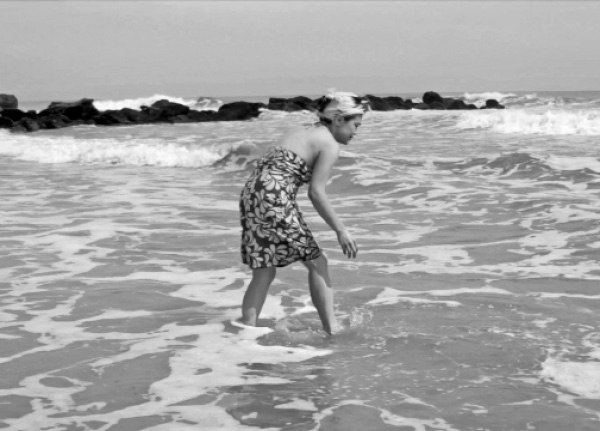
CULLING SEAWEED (LONG BEACH, NEW YORK)
first performed on April 19, 2017
Les Salines, Savane Des Pétrifications, Sainte-Anne, Martinique, French West Indies
performed twice in 2017
AKIKO ICHIKAWA
Brooklyn, NY
349383469a349383469k349383469i349383469k349383469o349383469.349383469i349383469c349383469h349383469i349383469k349383469a349383469w349383469a349383469@349383469g349383469m349383469a349383469i349383469l349383469.349383469c349383469o349383469m
instagram.com/akikoichik
CULLING SEAWEED (LONG BEACH, NEW YORK)
AKIKO ICHIKAWA
Having heard that the seaweed was plentiful in the area, I went into the waters off Long Beach, off the westernmost barrier island off of Long Island on August 8, 2017. Being a Tuesday, beachgoers were sparse. Dressed in a blue and green sundress which referenced the algae, I waded in, collecting the seaweed that washed in with each wave. I was in for about an hour and a half, and never went more than knee-deep into the water. After accumulating some in my palms or on my wrists (there wasn’t much), I walked back to the beach and, at 15 yards off the shore, made two piles of the stuff, sorting it by color and shape: wide, noodly green versus small, spiky dark red.
Seaweed is a staple in East Asian cooking, and roasted Korean seaweed is a popular snack in New York City and other coastal areas in the US. A protein source, seaweed, along with seafood, nuts, and legumes, offers a real alternative food choice to greenhouse gas-emitting red meat. It also has the ability to filter undesired nutrients from water, like ammonia, ammonium nitrate, nitrite, phosphate, iron, copper, and can rapidly consume carbon monoxide. Seaweed is used in fertilizer, animal feed, and in common mass-produced items like toothpaste and cosmetics.
Digging into Japanese folkways—the parts rooted in nature and an attachment to the sea and its offerings—I created the piece at Les Salines of the Savanes des Pétrifications in Martinique in April at the FIAP17 performance art fair with the understanding that my home, New York City, is surrounded by water yet its residents are barely conscious of it.